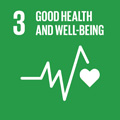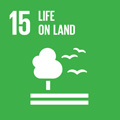- Docente: Fabiana Antognoni
- Credits: 9
- SSD: BIO/15
- Language: English
- Moduli: Fabiana Antognoni (Modulo 1) Fabiana Antognoni (Modulo 2)
- Teaching Mode: Traditional lectures (Modulo 1) Traditional lectures (Modulo 2)
- Campus: Rimini
- Corso: Single cycle degree programme (LMCU) in Pharmacy (cod. 5987)
-
from Sep 27, 2023 to Nov 27, 2023
-
from Feb 28, 2024 to May 10, 2024
Learning outcomes
The aim of this course is: - to acquire basic knowledges of plant biology; main topics are the organization and functions of the plant cell, tissues and organs of higher plants; - to provide knowledges useful to recognize the most used medicinal plants, in particular those of pharmaceutical, herbalistic, cosmetic and voluptuary use. The student attending this course learns how the production of active compounds by the plant can be affected by several factors.
Course contents
Plant Biology ( Part 1)
Plant organisms: the utility of plants for humans. Main differences between animal and plant organisms.
The plant cell structure. The cell wall: primary and secondary wall. Polymeric components associated with the cell walls of specialized tissues. The vacuole and its roles in plant cells. Plant secondary metabolites. Plastids: proplastids, chloroplasts, leucoplasts, chromoplasts. Photosynthesis at a glance. The light phase and the dark phase of photosynthesis.
Plant tissues: growth and differentiation of the plant cell. Tissues of vascular terrestrial plants: meristematic tissues and adult tissues. Tegumental, parenchymatic, mechanical, secretory, transport tissues.
Organs of vascular terrestrial plants: root, stem and leaf, their morphology and functions. Primary and secondary structure of the plant. Gymnosperms and Angiosperms. Dicotyledons and Monocotyledons. Agamic and sexual reproduction. The life cycle of Angiosperms.
Pharmaceutical Botany (Part 2)
Historical overview of Pharmaceutical Botany. Medicinal plants as a source of chemical compounds of medicinal interest. Definition and scope of pharmaceutical botany. The concept of natural crude drugs. Secondary metabolites as active components of medicinal plants. Endogenous and exogenous factors which affect their production in plants. Plants as source of chemicals for semi-synthesis reactions. Use of plants for biotechnological applications. Diversity and plant systematics; the classification of the plant kingdom. The Binomial Nomenclature.
Algae of medicinal interest: Rhodophyta, Pheophyta, Chlorophyta, their active compounds and practical uses.
Morphological characteristics useful for the identification of medicinal plants: leaf, flower and inflorescences, fruit.
Laxative and purgative plants: cascara buckthorn, alder buckthorn, senna, aloe, castor bean, plantago. Plants active on the CNS: valerian, California poppy, lemon balm, passionflower, St. John's wort, rauwolfia, coffee, ginkgo biloba, calabar bean. Plants active on the heart and circulatory system: purpe and woolly foxglove, hawthorn. Plants with anti-inflammatory and analgesic activity: opium poppy, devil's claw, coca, hemp. Plants for the digestive system: nightshade, licorice, milk thistle. Antitumor plants: Indian and American mayapple, Madagascar periwinkle, Pacific yew. Plants for the immune system: echinacea, ginseng.
Readings/Bibliography
Plant Biology (Part 1)
J.D. Mauseth - Botany-An Introduction to Plant Biology - Jones and Bartlett Publishers
Chapter 1 -Plants and people Box 1, Box 3
Chapter 2 - Table 2.5
Chapter 3 - Cell Structure
Chapter 4 - Growth and Division of the Cell
Chapter 5 -Tissues and the primary growth of stems
Chapter 6 - Leaves
Chapter 7 - Roots
Chapter 8 - Structure of woody plants
Chapter 9 - Plant Reproduction
Any other textbooks of Plant Biology or General Botany are fine.
Pharmaceutical Botany (Part 2)
Slides used for lessons, to be integrated with the following textbooks:
For the general part of the program:
J.D. Mauseth - Botany-An Introduction to Plant Biology - Jones and Bartlett Publishers
For plant monographies:
Plants that Cure - E.A. Dauncey and M-J. R. Howes - Princeton Press
Teaching methods
Front lessons will be organized using Power Point slides. These slides will be available to students on the Virtuale platform before each lesson.
The topics presented into the slides represents just a synthesis of the topics discussed in the classroom, and it should be considered not exaustive for a deep and complete learning of the subject. Therefore, slides must be integrated with the textbooks recommended by the teacher.
Assessment methods
Plant Biology (module 1):
The assessment of the acquired knowledge occurs through a final exam, which consists of a written test with 30 Multiple Choice Questions covering all topics of the program.
Pharmaceutical Botany (module 2):
The assessment of the acquired knowledge takes place through a final exam, which consists of a written test, followed by an oral discussion on medicinal plants.
The score of part 1 is valid for 12 months. Within this time period, the student should pass the part 2 to complete the exam. The final score is the arythmetic mean of the two single exams.
The booking of the exam occurs through the platform Almaesami.
According to The University Teaching Regulation, students are allowed to refuse a positive grade only once per each module.
Teaching tools
The teaching material utilized during the front lessons (slides) is available to students on the Platform IOL. However, this material alone is not enough for a deep and complete learning of the subject and must be integrated with the textbook suggested by the teacher.
Office hours
See the website of Fabiana Antognoni
SDGs


This teaching activity contributes to the achievement of the Sustainable Development Goals of the UN 2030 Agenda.
